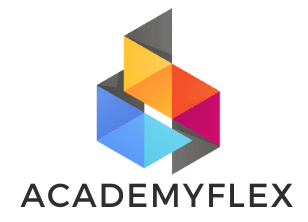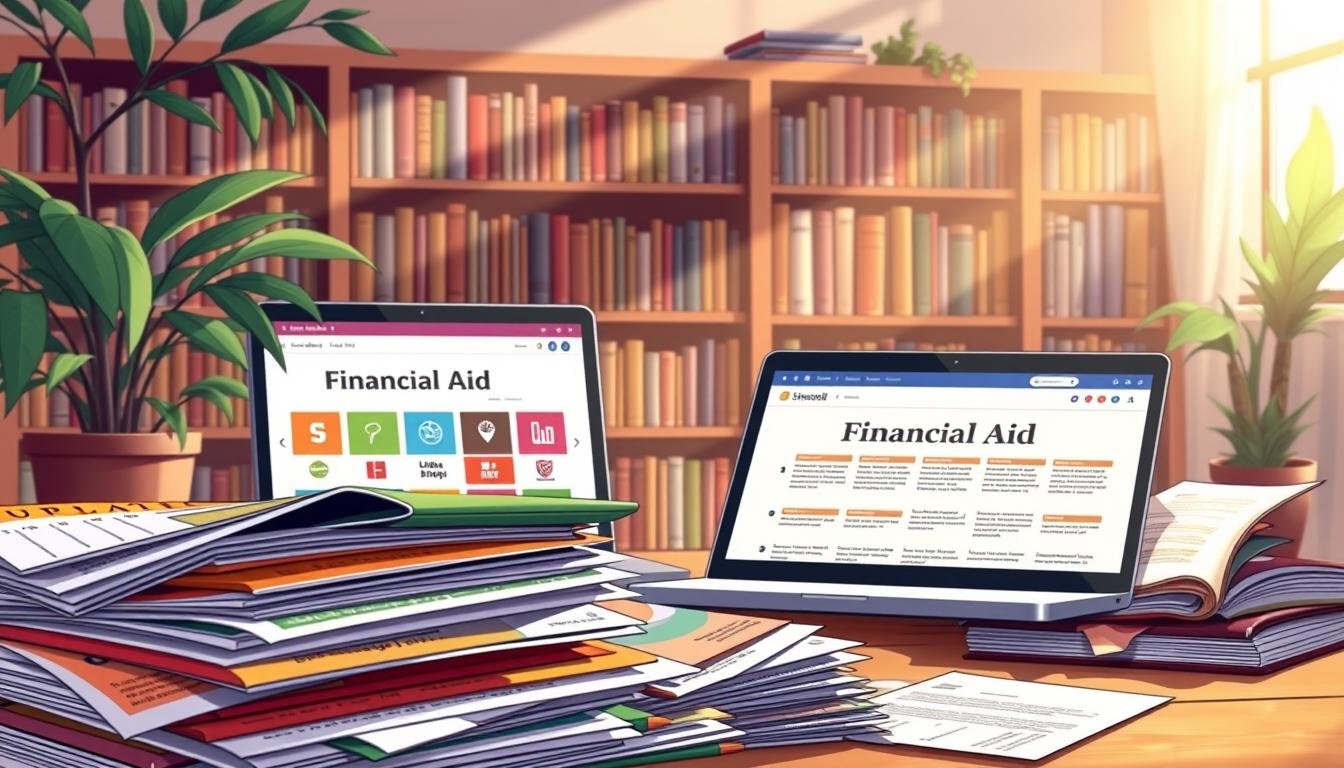Financial aid options for students
Did you know there are over a dozen financial aid sources you might be missing out on? With college costs rising, finding the right student financial aid can feel overwhelming. But what if we told you there’s a roadmap to navigate grants, scholarships, and loans without the guesswork?
Whether you’re a high school senior or a graduate student, this guide breaks down financial aid options for students into clear steps. From federal programs like FAFSA to state grants and private scholarships, we’ll show how to uncover every possibility. Plus, we’ll spotlight red flags to avoid and proven strategies to stretch your budget further.
Every year, millions of dollars in college financial aid go unclaimed because students don’t know where to look. This article reveals how to access federal aid via StudentAid.gov, state-specific programs, and even hidden school-specific grants. Learn how to apply, appeal for more aid, and protect yourself from scams.
Key Takeaways
- FAFSA is required for most federal, state, and school-based aid at StudentAid.gov.
- Over 1,000 scholarships exist through schools, employers, and nonprofits—many go unused.
- Missing deadlines or failing to report life changes can reduce your aid eligibility.
- Private scholarships and grants never require upfront fees—avoid scams demanding payments.
- Tuition payment plans and work-study jobs can lower immediate costs without loans.
Understanding Financial Aid Options for Students
Going to college can seem impossible without student financial aid. More than 80% of U.S. students get some financial help. This aid covers tuition, books, housing, and more, making college more affordable.
What Is Financial Aid?
Financial aid is money given to students to help pay for school. It comes from the government, states, or schools. You can get grants, scholarships, loans, or work-study programs. Grants and scholarships don’t need to be paid back.
Why Financial Aid Matters
Without college financial aid, many students can’t go to school. Tuition at public colleges is over $10,000 a year. Private colleges charge more than $35,000. Aid helps students pay for school, not just debt.
Common Types of Financial Support
- Grants: Need-based awards like Pell Grants or state-specific programs
- Scholarships: Merit or need-based awards from schools, nonprofits, or companies
- Work-Study: Federal jobs for eligible students to earn income
- Loans: Borrowed money from federal or private lenders (must be repaid)
Each aid type has its own rules and benefits. Looking into these options early helps plan for college.
Federal Student Loans: The Basics
Federal student loans are a key part of financial aid options for students seeking affordable borrowing solutions. These loans have fixed interest rates set by the government each year. This means your payments stay the same, making it easier to budget.
Unlike private loans, federal loans don’t start repayment until after you graduate or reduce your course load. This gives you more time to focus on your studies.
- Direct Subsidized Loans (for undergraduates with financial need)
- Direct Unsubsidized Loans (available to all undergraduates/graduates)
- PLUS Loans (for parents and grad students)
- Consolidation Loans (combining existing federal debts)
| Loan Type | Interest Rate (2023-2024) | Loan Fees | Repayment Terms |
|---|---|---|---|
| Direct Subsidized | 4.53% | 1.059% fee deducted upfront | 10–25 years |
| Direct Unsubsidized | 4.53% (Undergrad) / 6.08% (Grad) | Same 1.059% fee | 10–25 years |
| PLUS Loans | 6.60% | 4.236% fee | Up to 30 years |
Repayment plans adjust based on your income. You might qualify for forgiveness after 10–20+ years of on-time payments. Public service workers or those in certain fields can clear their balances faster.
Always choose federal student loans first. They offer income-driven plans and relief programs that private loans don’t.
Scholarships: Free Money for Your Education
Scholarships for students offer a way to fund your education without debt. They come from colleges, companies, nonprofits, and governments. Start looking early, as there are thousands available for different reasons.
Merit-Based Scholarships
Merit scholarships reward your talents and achievements. Whether it’s academics, sports, or arts, you could qualify. For example, the Coca-Cola Scholars Program gives $20,000 to high-achieving students each year.
Professional groups like the American Bar Association also offer awards. These are for members or their dependents.
Need-Based Scholarships
Need-based awards help with financial gaps. The Federal Supplemental Educational Opportunity Grant (FSEOG) supports low-income students. Many colleges, like Amherst, replace loans with scholarships in their aid packages.
Identity-Based Scholarships
Groups like the United Methodist Church and the Peace Corps fund students based on background or identity. Organizations support women, minorities, or immigrants. This ensures diversity in education.
Institutional Scholarships
Colleges like Brown University create scholarships to attract top students. These can cover full tuition or specific expenses. Check school websites for deadlines and criteria.
Private Scholarships
Corporations like Bank of America and local credit unions offer grants. Volunteering can also earn funds—the Segal AmeriCorps Award gives $6,000 after service hours. Use platforms like Fastweb or scholarships.org to find more.
Start applying early and explore every category. Scholarships for students are everywhere. Turn these opportunities into your ticket to success.
Grants: Financial Support You Don’t Repay
Grants for students are a big part of getting education funding without debt. They cover tuition, books, and living costs, and you don’t have to pay them back. The U.S. Department of Education runs big programs like Pell Grants. States and colleges also offer extra help.
Federal Grants
- Pell Grants: Up to $6,895/year for undergrads with high financial need (2023-24 data).
- FSEOG Grants: $100–$4,000 for undergrads at participating schools.
- TEACH Grants: Up to $4,000 for those committed to teaching in high-need fields. Failure to meet service obligations converts the grant into a loan.
State Grants
States like Vermont offer programs for residents. Check your state’s education website for deadlines and criteria. For example:
- New York’s TAP grant provides up to $5,445 annually for in-state students.
- California’s Cal Grant helps low- and middle-income residents attend college.
Institutional Grants
Colleges give grants based on need or merit. Schools like University of Michigan offer aid packages combining federal funds and institutional grants. Check your school’s financial aid office for details.
Private Grants
Foundations like the Coca-Cola Scholars Program and corporate grants from companies like Google provide niche support. These often target specific majors, backgrounds, or community involvement.
Remember: Grants reduce reliance on loans. Explore all financial aid options for students through your school’s portal and state resources. Start early—many grants have strict deadlines.
Work-Study Programs: Earn While You Learn
Work-study programs are part of student financial aid that help students earn money for school. They also gain work experience. Programs like the Federal Work-Study (FWS) are listed in financial aid options for students on FAFSA results. Eligible students can earn up to $2,800 or more, depending on their job and hours.
- Apply by filing FAFSA and selecting work-study interest
- Jobs are on or off campus (nonprofits, public agencies, or campus offices)
- Earnings go toward tuition, books, housing, and living costs
- Employers pay 50% of wages, with federal funds covering the rest
| Job Type | Location | Benefits |
|---|---|---|
| Lab Assistant | On-campus | Hands-on research experience |
| Library Clerk | On-campus | Scheduling flexibility |
| Community Outreach | Off-campus | Networking in public service |
| Tutoring Services | On-campus | Resume-building and peer connections |
Jobs often match your field of study. For instance, education majors might work in tutoring centers. Tech students could help in computer labs. Funds are limited, so apply early through your college’s Career Center or platforms like Handshake. Update your resume and prepare for interviews to stand out. Balancing work with studies is key—many employers adjust hours during exam weeks.
How to Complete the FAFSA Successfully
Starting the financial aid application is key to getting federal grants, loans, and work-study programs. The FAFSA form opens doors to student financial aid. But, it needs careful preparation. First, create a StudentAid.gov account and an FSA ID. You’ll need your Social Security number, birthdate, and email for this.
- Income tax returns (or W-2 forms)
- Social Security numbers for you and your contributors
- Bank and investment account details
- Alien Registration Number (if not a U.S. citizen)
Here’s what to do next:
- Fill out the FAFSA online at StudentAid.gov, using your FSA ID to sign.
- Answer questions about dependency status, marital status, and enrollment plans.
- Use the FA-DDX system to import tax data securely starting 2024-25.
- Review your Student Aid Report (SAR) for accuracy and correct errors immediately.
Avoid common mistakes: missing contributor signatures, wrong SSNs, or old tax info. Missing deadlines means losing aid. Apply by your state’s priority date—many states have deadlines earlier than June 30. Submit by October 1 for the best chance. Remember, dependent students must include parental info, even if they live on their own.
After submitting, check your SAR for your Student Aid Index (SAI), which shows if you’re eligible for aid. Keep an eye on StudentAid.gov for updates. Early applications and careful steps can help you get more student financial aid.
State-Specific Financial Aid Programs
Many students miss out on financial aid options for students from their state. These programs offer special help for residents, needing you to live in the state and go to school there. They can help with grants and scholarships, making college more affordable and reducing debt.
In Georgia, for instance, you can get the Cal Grant for college credits and the HOPE Scholarship for good grades. New York has the TAP for community college tuition. Florida gives out Bright Futures grants for high school achievements. Each state has its own benefits:
| Program | State | Details |
|---|---|---|
| Georgia ACE Grant | Georgia | Awards for high-demand careers |
| Georgia HOPE Scholarship | Georgia | Merit-based tuition coverage |
| NY TAP | New York | Community college tuition assistance |
| Florida Bright Futures | Florida | Merit-based grants for in-state schools |
| Georgia HERO Scholarship | Georgia | Support for military families |
Applying for these programs usually means filling out extra forms, not just the FAFSA. Look up your state’s higher education agency or talk to your school counselor. Many programs offer forgiveness of loans or grants for jobs in education, healthcare, or public service. Don’t overlook these resources that can help you pay for college.
Private Student Loans: When and How to Use Them
Private student loans can help when federal aid isn’t enough. But use them only after you’ve used up all grants, scholarships, and federal loans. This guide will help you pick the right lender and avoid bad deals.
Comparing Private Loan Options
When looking for a private loan, compare different lenders. Look at:
- Interest rates (fixed vs. variable)
- Fees (application, origination)
- Repayment options and terms
- Cosigner requirements
Credible’s platform lets you compare rates from Ascent or Sofi. For example, Ascent offers a 1% Cash Back Graduation Reward and rates from 3.39% APR.
Interest Rates and Repayment Terms
Private loans usually have higher interest rates than federal loans. For example, Sallie Mae’s variable rates start at 30-day SOFR +4.80% (4.54% APR). Fixed rates range from 3.74% to 16.53% APR. Repayment options include:
- In-school deferment
- Interest-only payments
- Full repayment after graduation
Choose repayment terms (5–20 years) that balance affordability and interest paid.
Co-Signer Requirements
Most borrowers under 24 need a cosigner with good credit. A cosigner is responsible for repayments. Some lenders, like CollegeAve, offer cosigner release after 36 on-time payments. Ask lenders:
- Do cosigners qualify for release?
- Are autoppay discounts available?
- What happens if the cosigner has poor credit?
Always try federal financial aid options first before getting private loans.
Financial Aid for Graduate Students
Graduate students face special challenges when looking for financial aid options for students. There are programs like assistantships, fellowships, and loans to help. Let’s look at your choices.

Assistantships and Fellowships
Teaching and research assistantships offer tuition waivers and stipends. For example, research roles might cover 50–100% of tuition and give you hands-on experience. Fellowships, like the Fulbright, support your studies and professional growth. Also, check if your program has administrative roles.
Specialized Graduate Loans
Federal student financial aid includes Direct Unsubsidized Loans (up to $20,500/year) and PLUS Loans for extra costs. Here’s a comparison of loan types:
| Type | Annual Limit | Interest Rate (2023) |
|---|---|---|
| Direct Unsubsidized | $20,500 | 6.59% |
| PLUS Loans | Varies by school | 7.08% |
Private loans might have better terms if you have a steady income or a cosigner.
Employer Tuition Assistance
About 48% of employers help with tuition, averaging $10,500 yearly. Here’s how to explore this:
- See if your job offers tuition reimbursement or grants.
- Look for fields like education or healthcare—many employers help in these areas.
- Ask about service agreements or GPA requirements.
Use these options wisely. Start with the FAFSA for federal aid, then look at school-specific grants or employer programs. Every dollar saved or earned helps you reach your goals!
Navigating Need-Based vs. Merit-Based Aid
When looking at financial aid options for students, it’s important to know the difference between need-based and merit-based aid. Need-based aid looks at family income, using forms like FAFSA. Programs like Pell Grants offer up to $7,395 for the 2024–2025 year, helping those who need it most.
Merit-based aid, on the other hand, rewards students for their achievements. This could be high grades, sports, or talents. Students must keep up their academic performance to keep this aid.
- Requires FAFSA submission to calculate Expected Family Contribution (EFC).
- Includes grants (no repayment) and subsidized loans.
- Examples: Pell Grants, state aid programs, work-study jobs.
Merit-Based Aid Highlights:
- Awards based on skills, grades, or extracurriculars.
- Scholarships may need essays, test scores, or ongoing GPA requirements.
- Colleges like Harvard use merit-based strategies to attract top students.
Some schools mix both types of aid. For example, private scholarships might ask for good grades and financial need. Tools like R2C Insights help compare colleges’ aid policies. Remember:
- Renew FAFSA yearly to keep need-based aid eligibility.
- Apply early for merit scholarships, even if you qualify for need-based support.
- Colleges like Ivy League institutions may only offer need-based aid, meeting 100% of demonstrated need.
By exploring both options, students can create stronger aid packages. Check college websites and use resources to make the most of every opportunity.
Military and Veteran Education Benefits
Service members, veterans, and their families get special student financial aid programs. These help pay for tuition, housing, and school supplies at colleges across the country. Let’s look at the main benefits for those who qualify.
GI Bill Options
- Post-9/11 GI Bill®: Offers up to 36 months of benefits for tuition, housing, and books. Benefits can be transferred to spouses and children.
- Montgomery GI Bill®: There are two types—Active Duty (MGIB-AD) and Selected Reserve (MGIB-SR). Both provide up to 36 months of direct payments.
- VEAP: Veterans can use their VEAP contributions for education costs. The VA matches these contributions.
Yellow Ribbon Program
This program helps students at expensive schools. It covers tuition beyond what the GI Bill pays. The VA matches school contributions, up to a certain amount.
Military Tuition Assistance
Active-duty members get financial aid options for students through their branch. For example, Army Emergency Relief and Navy Marine Corps Relief Society offer grants. Most programs cover 100% of tuition for in-state schools.
Dependent Education Benefits
| Program | Eligibility | Benefits |
|---|---|---|
| Survivors’ & Dependents’ Educational Assistance (DEA) | Spouses/children of deceased or disabled veterans | Up to 45 months of tuition, housing, and training support |
| Military Officers Association of America (MOAA) | Military members and families | Interest-free loans, grants, and scholarships |
Using these benefits with Pell Grants or private scholarships can increase support. Check the VA’s Federal Benefits for Veterans guide and branch-specific aid societies for more information.
Special Financial Aid Circumstances
Life can be unpredictable, leading to situations not covered by standard student financial aid rules. This part talks about what to do when you face unexpected changes. These can include job loss, health crises, or unique family situations.
Independent Student Status
Some students are considered independent. This means they are 24+, married, in the military, or have dependents. Below is a list of what makes you independent:
| Criteria | Description |
|---|---|
| Age | At least 24 years old by December 31 of the award year |
| Marital Status | Legally married or widowed |
| Military Service | Active duty beyond 13 weeks or veteran status |
| Dependents | Legal dependents other than spouse |
Financial Aid Appeals
Appeals are for unexpected events like:
- Job loss or reduced income
- Large medical expenses
- Natural disaster impacts
To appeal:
- Submit a written explanation to your school’s aid office
- Provide tax forms, medical bills, or legal documents
- Wait 4–6 weeks for a decision
Aid for Students with Disabilities
Students with disabilities might get:
- Disability-specific scholarships
- State vocational rehabilitation services
- Supplemental Security Income (SSI) coordination
Having documents like doctor’s notes or IEP/504 plans helps with financial aid application reviews.
Remember, school decisions are final and can’t be appealed to the U.S. Department of Education. Always keep copies of all documents you submit.
Managing Student Loan Debt Effectively
With the average student loan debt over $37,852, managing loans is crucial. Start by borrowing only what you need through college financial aid. Check these offers every year to avoid borrowing too much.
Federal student loans offer flexible repayment options. You can choose from:
- Standard 10-year plans for fixed payments
- Income-driven plans adjusting payments to income
- Graduated plans starting with lower payments
Try the debt avalanche method to tackle high-interest loans first. Look into forgiveness programs for public service workers or teachers. You can also consolidate loans to make payments easier. Always pay on time—contact your servicer if you’re struggling.
Smart steps include:
- Enroll in auto-pay to cut interest by 0.25%
- Claim the $2,500 tax deduction for loan interest
- Ask employers about repayment assistance programs
Regularly check your loan servicer to adjust plans as your income changes. Public Service Loan Forgiveness (PSLF) can wipe out your debt after 120 payments. Refinancing private loans might lower rates, but you’ll lose federal benefits like forbearance.
Track your progress every month and never miss a payment. Small steps today lead to long-term financial stability. Focus on learning about your loans rather than stressing about them.
Avoiding Financial Aid Scams and Pitfalls
It’s important to protect yourself from scams when looking for student financial aid. Scammers target students and families with fake offers. But, knowing how to spot them can keep your money and personal info safe.
Red Flags to Watch For
Here are some warning signs:
- Requests for payment to apply for scholarships or grants.
- Guarantees of guaranteed financial aid application success for a fee.
- Demands for personal information like Social Security numbers or FSA IDs.
- Urgent deadlines or high-pressure sales tactics.
- Unofficial websites ending in .com instead of .gov or .edu.
Legitimate Resources for Help
| Red Flags | Safe Signs |
|---|---|
| Upfront fees | Free FAFSA assistance from schools |
| “Exclusive” scholarship claims | School counselors offering free guidance |
| Emails from non-government domains | .gov/.edu websites for aid info |
Reporting Suspicious Activity
If you think you’ve been scammed, act fast:
- Contact the Federal Trade Commission at FTC.gov/Complaint.
- Report to the Department of Education’s OIG at Oig.ed.gov.
- File a local police report for financial fraud.
Always check offers through official sources. Real financial aid application help never asks for money first. Keep your FSA ID safe, like a password—never share it.
Conclusion
Choosing the right financial aid options for students is crucial for affordable college. Grants, scholarships, work-study, and loans are all important. But, start with free aid like scholarships first.
Start looking into college financial aid early. Research schools a year before, file the FAFSA quickly, and apply to many scholarships. Remember, over 40% of students choose cheaper schools because of costs. So, acting early can open more doors.
Financial aid is an ongoing process. Tuition costs have gone up 79% since 2003. So, staying on top of it is important. Keep track of deadlines, keep good grades for merit-based aid, and reach out to aid offices if your situation changes.
Federal loans are better than private ones, but only borrow what you need after using up grants and scholarships. Work-study and part-time jobs can also help cut down costs.
Use websites like FAFSA.gov, school aid offices, and scholarship databases to stay updated. Update your plan every year—aid packages can change. With careful planning, students from all backgrounds can afford college. Start by setting your goals, then plan steps like filing the FAFSA by the priority deadline. Higher education is within reach when you know financial aid options for students and plan wisely.
Source Links
- Types of Aid and Eligibility | Federal Student Aid – https://financialaidtoolkit.ed.gov/tk/learn/types.jsp
- Other Types of Aid – Finaid – https://finaid.org/otheraid/
- 7 Options if You Didn’t Receive Enough Financial Aid – https://studentaid.gov/articles/financial-aid-not-enough/
- Student’s Guide to Financial Aid and the FAFSA | BestColleges – https://www.bestcolleges.com/resources/fafsa/
- Types of Financial Aid | Georgia Student Finance Commission – https://www.gafutures.org/federal-aid-scholarships/financial-aid-basics/types-of-financial-aid/
- Federal Student Loans: Basics for Students – https://www.saic.edu/sites/default/files/legacy/DOE-Federal-Direct-Student-Loan-Basics.pdf
- Understanding student financial aid – https://www.ameriprise.com/financial-goals-priorities/education-planning/understanding-financial-aid
- Free Money for College | Edvisors – https://www.edvisors.com/plan-for-college/paying-for-college/free-money-for-college/
- How To Go To College For Free: 12 Options | Bankrate – https://www.bankrate.com/loans/student-loans/ways-to-attend-college-for-free/
- Student Financial Aid Options | VSAC – https://www.vsac.org/pay/student-aid-options
- Types Of College Financial Aid That Don’t Have To Be Paid Back – https://www.collegeraptor.com/paying-for-college/articles/financial-aid/types-of-college-financial-aid/
- Work-Study – https://fas.ucsd.edu/types/work-study/index.html
- What’s Work-Study? – BigFuture | College Board – https://bigfuture.collegeboard.org/pay-for-college/get-help-paying-for-college/work-study
- 6 Steps for Students Filling Out the FAFSA® Form – https://studentaid.gov/articles/steps-students-filling-out-fafsa-form/
- How to Complete the FAFSA – BigFuture – https://bigfuture.collegeboard.org/pay-for-college/get-help-paying-for-college/fafsa/how-to-complete-the-fafsa
- Filling Out the FAFSA | 2024-2025 Federal Student Aid Handbook – https://fsapartners.ed.gov/knowledge-center/fsa-handbook/2024-2025/application-and-verification-guide/ch2-filling-out-fafsa
- State Scholarships, Grants and Loans – https://gsfc.georgia.gov/programs-and-regulations/state-scholarships-grants-and-loans
- Financial Aid Options 2025 | Your College Funding Guide – https://www.educationconnection.com/financial-aid/
- What Are the Differences Between State and Federal Financial Aid Programs? – https://blog.collegevine.com/what-is-the-difference-between-state-and-federal-financial-aid
- Private Student Loans – Finaid – https://finaid.org/loans/privatestudentloans/
- Private student loans: What you need to know – https://www.citizensbank.com/learning/what-are-private-student-loans.aspx
- Choosing a loan that’s right for you | Consumer Financial Protection Bureau – https://www.consumerfinance.gov/paying-for-college/choose-a-student-loan/
- Financial Aid for Graduate or Professional Students – https://studentaid.gov/sites/default/files/graduate-professional-funding-info.pdf
- Paying For Graduate School: 7 Funding Strategies – https://graduate.northeastern.edu/knowledge-hub/paying-for-graduate-school/
- Financial Aid for Graduate School: Who Qualifies and How to Apply – NerdWallet – https://www.nerdwallet.com/article/loans/student-loans/financial-aid-for-graduate-school-who-qualifies-and-how-to-apply
- Understanding Merit-Based vs. Need-Based Financial Aid – https://www.umassglobal.edu/news-and-events/blog/merit-based-vs-need-based-financial-aid
- The First Thing to Understand about Financial Aid: Need vs. Merit – https://www.road2college.com/whats-the-difference-between-merit-and-need-based-financial-aid/
- Financial Aid for Veterans and their Dependents – Finaid – https://finaid.org/military/veterans/
- Financial Aid for Veterans and Service Members | BestColleges – https://www.bestcolleges.com/resources/military-financial-aid/
- Special Cases | 2023-2024 Federal Student Aid Handbook – https://fsapartners.ed.gov/knowledge-center/fsa-handbook/2023-2024/application-and-verification-guide/ch5-special-cases
- Special and unusual circumstances – https://financialaid.ku.edu/special-and-unusual-circumstances
- 10 Tips for Managing Your Student Loan Debt – https://www.investopedia.com/articles/personal-finance/082115/10-tips-managing-your-student-loan-debt.asp
- Tips for student loan borrowers | Consumer Financial Protection Bureau – https://www.consumerfinance.gov/paying-for-college/repay-student-debt/student-loan-debt-tips/
- Tips for Managing and Paying Back Student Loans – BigFuture – https://bigfuture.collegeboard.org/pay-for-college/get-help-paying-for-college/college-loans/tips-for-managing-paying-back-student-loans
- Be Prepared for Student Aid Scams – College Admissions Strategies – https://collegeadmissionsstrategies.com/be-prepared-for-student-aid-scams/
- How To Avoid Scholarship and Financial Aid Scams – https://consumer.ftc.gov/articles/how-avoid-scholarship-and-financial-aid-scams
- Paying for School and Avoiding Scams – https://consumer.ftc.gov/articles/how-student-loans-work-how-avoid-scams
- The Only Financial Aid Guide You’ll Ever Need – https://goingmerry.com/blog/ultimate-financial-aid-guide/
- What is Financial Aid for College? – NerdWallet – https://www.nerdwallet.com/article/loans/student-loans/fafsa-financial-aid-options
- Financial aid not enough? 6 Ways to close the college funding gap – https://www.citizensbank.com/learning/what-to-do-not-enough-financial-aid.aspx








